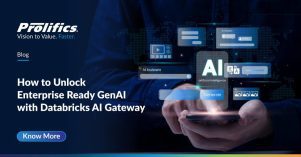In today’s rapidly evolving digital landscape, enterprises are constantly faced with a key technology decision — should they integrate existing systems or modernize them entirely?
To explore this balance, we spoke with Andy Blank, VP of Technical Sales (North America), who shared his perspective on when to integrate and when modernization becomes inevitable.
Understanding Modern Integration
According to Andy, modern integration is all about connectivity without disruption.
“Integration is about not touching the original system,” explains Andy. “Say you have a giant SAP platform running your business — from invoicing and logistics to HR. You’re not going to replace it, but you might need to connect it with your new e-commerce website.”
Modern integration focuses on enabling systems to communicate seamlessly using technologies like APIs, adapters, and cloud-based platforms.
Instead of altering legacy systems, organizations can create integration layers that connect these systems securely and efficiently.
The Role of APIs and Adapters
Big vendors like SAP, Oracle, JD Edwards, and PeopleSoft are increasingly building their own integration points and middleware.
These APIs and adapters simplify how new platforms interact with older systems.
- Older systems may still use text files or SQL-based connections to share data.
- Modern tools like MuleSoft standardize and automate these integrations.
- APIs help create a common communication language between legacy and modern applications.
“The goal is to hide outdated communication methods behind an abstraction layer so everyone speaks a common language — APIs,” Andy adds.
This approach allows businesses to modernize gradually, maintaining operational continuity while improving data exchange.
When to Modernize Legacy Systems
While integration keeps systems functional, modernization is inevitable at some point.
Andy notes that businesses upgrade or replace systems when:
- Upgrades become unavoidable due to outdated technology.
- Maintenance costs outweigh the benefits of the old system.
- Compatibility issues hinder innovation or scalability.
“The endpoint systems you’re integrating eventually have to modernize,” Andy explains. “Upgrading platforms like SAP can be a multi-year, multi-million-dollar effort — so companies often delay it until absolutely necessary.”
Sometimes, modernization means adopting cloud-based, web-native platforms that offer improved performance, security, and scalability — rather than upgrading the existing legacy solution.
Real-World Example: The Island Pacific Upgrade
Andy shared an example of a client using Island Pacific, a 20-year-old system.
Because of its age, the system could only communicate using text files.
“Every time we needed to interact with that system, we had to convert data into text files,” says Andy. “Eventually, the client decided that upgrading would be more painful than replacing it entirely.”
This highlights a critical decision many enterprises face — whether to upgrade a legacy system or replace it with a modern, cloud-based alternative that integrates more easily with other applications.
Finding the Right Balance
Choosing between integration and modernization is a strategic balancing act.
At Prolifics, the focus is on helping organizations:
- Evaluate which systems to integrate, upgrade, or replace.
- Identify the cost, complexity, and ROI of modernization projects.
- Develop a roadmap for sustainable digital transformation.
“We help clients every day decide where to modernize and where to integrate,” Andy concludes. “It’s all about finding the right balance for performance, cost, and future growth.”
About Prolifics
Prolifics is a digital engineering and consulting firm that helps organizations accelerate their digital transformation journeys.
We deliver enterprise-grade innovation through agile methodologies, ensuring rapid, continuous value creation.
Our expertise spans:
- Data & AI
- Integration & Applications
- Business Automation
- DevXOps and Test Automation
To learn more, email solutions@prolifics.com




